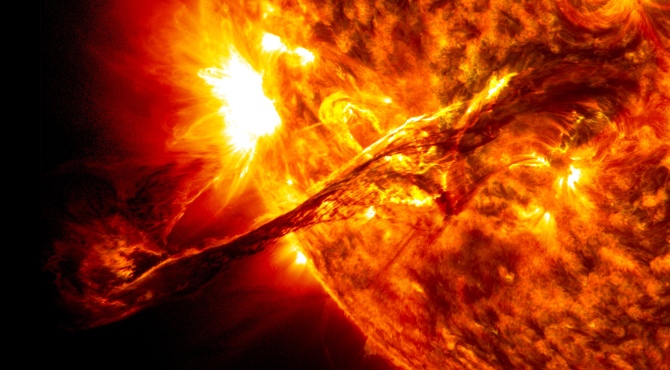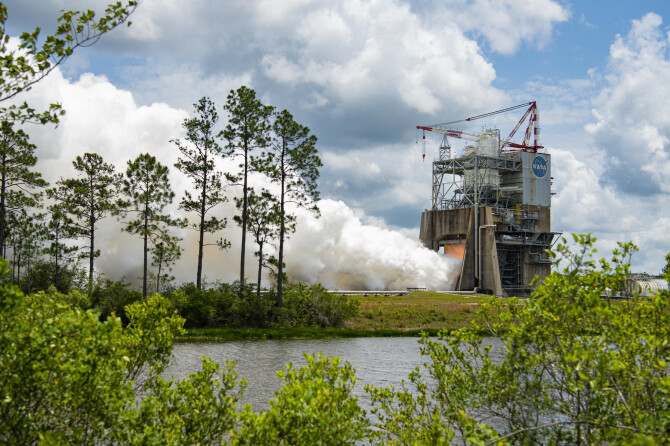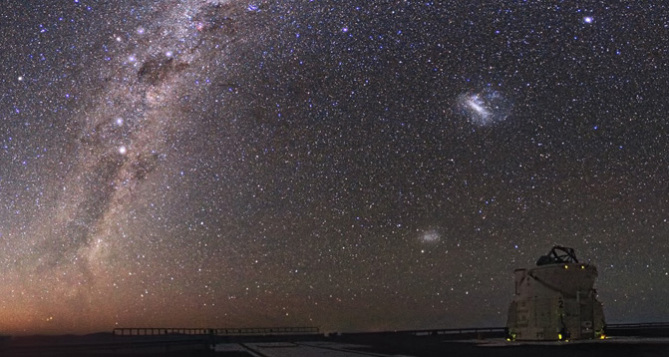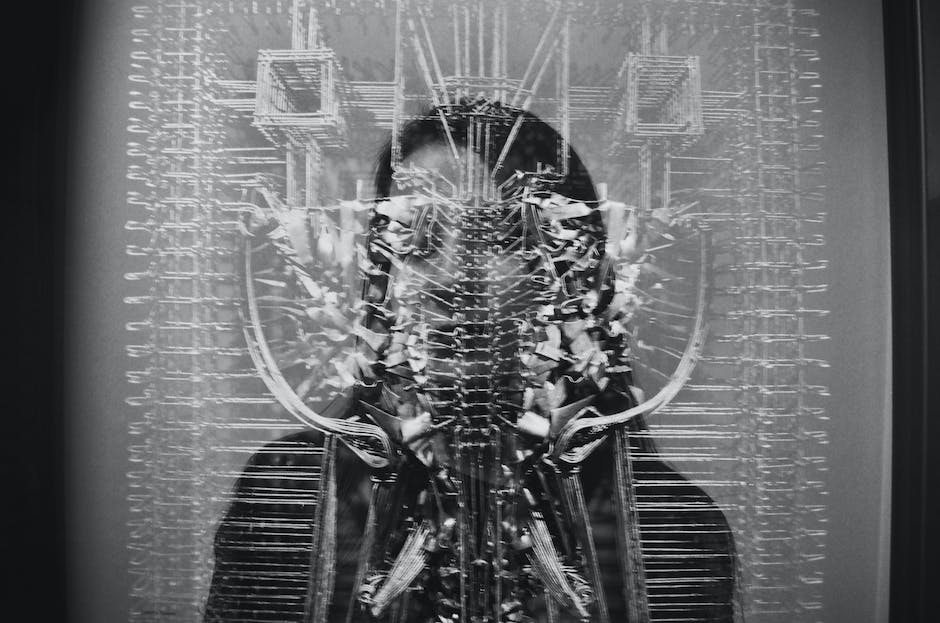[ad_1]
Hello, everyone, and welcome back to This Week in Space: all the space news fit to print, accurate to within an order of magnitude. We’ve got some weighty academic questions, a mid-sized black hole, and tiny tangles in spacetime. Plus, an internal NASA investigation shines a harsh light on its SLS program finances. Let’s jump right in, shall we?
You’ve Heard of the ‘Snow Line’—Get Ready for the ‘Soot Line’
In astronomy, the “snow line” is the distance from a star beyond which volatiles like water and CO₂ turn to ice. Outward of the snow line, you get cold Jupiters and ice giants like Neptune (or its little cousin, Hoth).
As you move inward from the snow line, there’s a more-or-less habitable “Goldilocks zone” where water can coexist in all three phases on a planet’s surface, as it does on Earth. Go further sunward, and you get Venus and its choking, caustic smog—and then charred Mercury, tucked in close to the Sun and zipping around as if it’s trying to escape the heat. But somewhere near Venus lies what UMich astronomer Ted Bergin and colleagues are calling the “soot line,” where organic compounds—even those trapped within the crystal lattice of a solid—start to vaporize. The group hopes that paying attention to the soot line, not just the snow line, may help us in our search for potentially habitable worlds orbiting other stars and even teach us about the deep history of our own solar system.
Looking for planets between soot and snow “adds a new dimension in our search for habitability. It may be a negative dimension, or it may be a positive dimension,” Bergin said. “It’s exciting because it leads to all kinds of endless possibilities.”
Found: One Black Hole, Medium Size, Very Friendly. Definitely Not Housetrained
Black holes are a study in extremes. It’s as if the laws of nature just threw all the sliders to one side or the other. For example, most of the black holes we know about are about the size of a large star—or else, so massive they can hold an entire galaxy’s worth of material about themselves. However, an international team of NASA and ESA scientists doing research with the Hubble and Gaia telescopes found a rare black hole of intermediate size: about 800 solar masses. The strangelet resides in the globular cluster Messier 4.
Mega-Flares or Meteorites? Scientists Still Arguing Over Origin of Life
This week, two different groups of researchers advanced two separate hypotheses about the origin of life on Earth. One team, co-led by Kensei Kobayashi of Yokohama National University in Japan and Vladimir Airapetian of NASA’s Goddard Space Flight Center, proposes that high-energy solar flares early in our planet’s lifetime were an important source of amino acids. The team did some math based on the Miller-Urey experiments, fired up a couple of particle accelerators just to make sure, and found that while lightning striking “primordial soup” absolutely would have made amino acids, it just wouldn’t have been enough.
Instead, the team proposes that extra-spicy cosmic rays and ultra-high-energy solar flares called superflares “represent[ed] the most effective energy sources for the prebiotic formation of biologically important organic compounds.” It’s like panspermia but turned inside out and upside down: in this telling of Earth’s deep history, we got our amino acids not from a visiting comet (or aliens), but from direct irradiation of our own atmosphere by our own parent star.

Phenomenal cosmic power! Iiiiiitty-bitty chemicals. Superflares dwarf this X-class flare.
Credit: NASA/Goddard
Meanwhile, a group from the Max Planck Institute for Astronomy and Ludwig Maximilians University Munich asserts that the precursors to Earth’s first amino acids could absolutely have come to Earth via space rocks falling to Earth—specifically, space rocks rich in iron. Tiny particles of iron, according to the group, could have catalyzed the reactions that made hydrocarbons out of the early Earth’s reducing atmosphere. According to their report, ferrous meteorite impacts could have produced up to 600,000 tons of precursor chemicals per year.
New Progress Spacecraft Docks With International Space Station
Wednesday, the uncrewed ISS Progress 84 (84P) capsule made berth at the International Space Station (ISS), carrying about three tons of food, experiments, and sundry supplies. The capsule launched on a Soyuz rocket from Russia’s Baikonur cosmodrome, taking just over three hours to ascend, make two full orbits of the Earth, and maneuver before it docked with the station.
Axiom Space, SpaceX Send Privately Funded Astronauts to ISS
This week, the second privately funded mission to the ISS (Axiom Mission 2, or “Ax-2” for short) brought four people to the orbital lab: Ax-2 mission commander Peggy Whitson, pilot John Shoffner, and mission specialists Ali Alqarni and Rayyanah Barnawi. The quartet spent their first few days getting used to living in space and getting a handle on station operations. They’ll cast off from the station for their return to Earth (weather permitting) on May 30.

From left, Mission Specialist Rayyanah Barnawi, Pilot John Shoffner, Commander Peggy Whitson, and Mission Specialist Ali Alqarni are pictured inside the SpaceX Dragon Freedom crew ship,
Credit: SpaceX
Seven people—the crew of Expedition 69—were already aboard the station when Ax-2 arrived. The group includes Roscosmos cosmonauts Sergey Prokopyev, Andrey Fedyaev, and Dmitri Petelin; NASA astronauts Frank Rubio, Stephen Bowen, and Woody Hoburg; and UAE (United Arab Emirates) astronaut Sultan Alneyadi. Petelin, Prokopyev, and Rubio are all in the middle of a surprise six-month extension to their original six-month tenure aboard the station after a micrometeoroid or orbital debris (MMOD) impact last December wrecked the cooling loop on the Soyuz MS-22 capsule that was supposed to be their ride home.
Privately Funded Visits ‘Incredibly Important’ to Our Future in Orbit
Cmdr. Whitson is America’s most experienced astronaut, with a record 665 days spent in space—and she has some comments about private missions and what they mean for the future of human activity in low-earth orbit. Whitson is visiting the ISS this week as a commercial passenger, and she believes the commercialization of space is essential to its long-term success.
“Back in the ’30s, ’40s, as commercial aviation was developing from something that started off initially as (an) all government (initiative), it was a long process before it was something that became every day to us,” Whitson said.
“But it’s incredibly important if we want to increase access to space for as many people as possible that we get started somewhere. And this is a first step.”
Whitson acknowledged that current prices are too high for all but the wealthiest people, but she believes commercialization will continue to drive down prices, making routine space travel more affordable to larger groups of people. “You could just be somebody that’s paid to go as part of your job to be there,” she said. “And so I think that eventually, all that will build to greater and greater access to space.”
ULA Stands Down Vulcan Centaur Before Landmark Test Fire
Wednesday afternoon, ULA (United Launch Alliance, a joint venture of Boeing and Lockheed Martin) had scheduled a test fire of the Vulcan Centaur heavy lift vehicle’s first-stage engines. However, all did not go as planned.
The Vulcan Centaur’s first stage uses two of Blue Origin’s BE-4 methalox engines. Its second stage is powered by two Centaur V hydrolox engines of ULA design. With their combined thrust plus a few solid rocket boosters, the most powerful version of the rocket will be able to hoist thirty tons to LEO. As a whole, ULA intends the Vulcan Centaur to succeed both the Atlas V and Delta Heavy.
LIGO Is Back Online, More Sensitive Than Ever
After a three-year hiatus for upgrades, LIGO is back in the (laser interferometry) game. The facility’s shiny new “light-squeezing” detector can now pick up disturbances the size of the dx in a derivative—that is, as close to zero as you can get without actually being zero. In a galaxy a hundred thousand light years wide, gravitational waves may only change its diameter by three feet.
For more on gravitational waves and how the exquisitely sensitive LIGO detector finds them, check out Ryan Whitwam’s downright elegant writeup, linked above.
Black Holes Could Be ‘Tangles in Space-Time’
Perfectly timed for LIGO’s grand re-opening, a group of mathematicians has discovered a curious phenomenon in the “penumbra and emanations” of string theory—minuscule black hole “lookalikes” that could teach us about quantum gravity.
The researchers propose that the infinitesimal, curled-up extra dimensions of string theory could get tangled or kinked, forming stable defects called topological solitons that would put a “wrinkle” in space-time. These defects, the researchers say, could bend light much like a black hole does, casting shadows and pulling photons into “stable orbital rings.” Given that we have neither a black hole nor a topological soliton handy and are highly unlikely to find one, this entire question may remain academic.
(Trying to read the abstract of that paper gave me a remarkably specific sense of déjà vu. It felt exactly like picking up one of the books halfway through the Ender’s Game saga, opening it, and trying to decipher what’s on the page without ever having read the series before. Topologists are brave souls, lunatics, or both.)
NASA Explores Building With In-Situ Resources
Mars Dune Alpha is an Earthside training facility at NASA’s Johnson Space Center meant to prepare humans for exploring, and eventually living, off-world. It’s like Mars but with training wheels on. Recently, the agency launched a joint project with the Moon to Mars Planetary Autonomous Construction Technology (MMPACT) team to figure out the best ways to use regolith from on-site as a construction material, instead of paying the wealth of several small nations for a few thousand soft-landed kilograms to Mars. One potential tactic: 3D-printed structures made of “Mooncrete” or “Marscrete,” which would use regolith in place of the sand we use on Earth. Next year, MMPACT will also begin experimenting with using lasers and microwaves to melt down regolith into something useful.
When it comes to in-situ resource utilization (ISRU), NASA finds itself in good company. Just recently, Blue Origin announced plans to build out a solar power network on the Moon using raw materials extracted from lunar regolith. Less than a month ago, NASA also announced plans to zap regolith into usefulness in a different way: Like the Chang’e 8 rover project, NASA is looking into refining regolith by straight-up electrical sintering. Not only did the agency’s preliminary experiments yield useful metal, but they also off-gassed carbon monoxide, which (like carbon dioxide) could be a useful component of hydrocarbons or even polymer resin.
Internal Review Warns NASA Has Spent Outrageous Sums on SLS Propulsion
NASA is no stranger to slipping schedules and budget overruns. There’s always a certain amount of slush to NASA’s project budgets, partly because of the way Congressional mandates direct NASA to do its job. When the Space Launch System (SLS) took flight with Artemis 1, we already knew it was billions of dollars over budget. But this week, the office of NASA’s inspector general, Paul Martin, published the results of an internal investigation of the problems plaguing the SLS project, and it’s…eye-opening. The inspector general’s office (OIG) warns that the agency has been throwing cash at the SLS’s propulsion systems like Mansa Musa threw gold at the Mediterranean.

May 10 hot-fire test of the RS-25 SLS engines at NASA’s Stennis Space Center.
Credit: NASA/Marshall SFC
The report specifically calls out cost-plus contracts, recommending that the agency move to a fixed-price model for the remaining development of the SLS’s RS-25 engines. But it sings the same tune about NASA’s Marshall Space Flight Center that a similar report sang about the JPL. Marshall is struggling to bear up under staffing shortages, and that’s a problem all on its own. The OIG report also recommends “ensur[ing] Marshall officials comply with best practices for establishing and maintaining internal controls related to REAs [and] fiscal law.” REAs are requests for an equitable adjustment of award fee payments—the report calls into question the $20 million and $30 million award fees paid out to Aerojet Rocketdyne and Northrop Grumman, respectively. Yikes.
But none of that compares to the OIG’s top-level assessment of the SLS project’s financial wellness. All told, the SLS’s propulsion systems have racked up $6 billion in budget increases and six years wasted in project delays.
It may be time for the nation to take a long, cold look at our priorities when it comes to what we the people (or at least, 538 of us) ask NASA to do. If the SLS costs this much, and private space outfits are popping up like mushrooms after a week of rain—maybe there’s just a better way to establish a long-term human presence offworld.
Skywatchers Corner: Dark Skies Reveal Southern Galaxies
That last bit was heavy, so I offer you some eyebleach: Here is a beautiful image of the sky above the European Southern Observatory, a group of dark-skies terrestrial telescopes perched high in the Chilean Andes.

Credit: ESO / Y. Beletsky
At this elevation, the atmosphere is so thin that the unaided eye can make out not just the Milky Way, but galaxies including the Large and Small Magellanic Clouds, visible here in the sky above Cerro Paranal.
That’s all for this week. But like a comic book villain, we’ll be back next Friday—same space time, same space channel.
[ad_2]
Source link
















